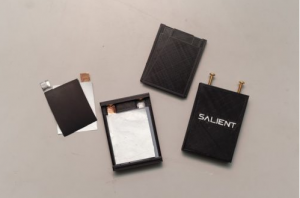Lithium-ion batteries are the leading battery technology for both electric vehicles (EVs) and the renewable energy industry. This makes it critical in the fight against climate change, with the world’s ability to adopt EVs and renewables limited in part by its ability to source lithium-ion raw materials. This is creating enormous risk, as the scarce nature of many lithium-ion raw materials is already expected to lead to widespread shortages by mid-decade. Finding alternatives to lithium-ion is therefore critical to supporting more ambitious climate action.
Lithium batteries are likely to always be the leaders in energy density, which makes them the best solution for applications like EV where weight matters. However, renewable energy storage is stationary in nature, meaning that the weight of the battery is unimportant. This is where the greatest opportunity lies for lithium-ion alternatives that use abundant raw materials.
While there have been numerous attempts to develop an alternative to lithium-ion, few have demonstrated the performance needed for renewable energy storage. Among the few with sufficient performance, manufacturing scalability has been a major challenge. Non-lithium battery technologies have typically demanded unique manufacturing processes that are difficult and expensive to run at scale. This has left the industry with a clear understanding that any alternative to lithium-ion will in fact need to be compatible with standard manufacturing processes to ensure rapid, low-cost scale-up.
To date, the only non-lithium technology that has both the performance and manufacturing compatibility to compete alongside lithium-ion has been the zinc-ion battery. Zinc-ion batteries use raw materials that are orders of magnitude more abundant in a standard lithium-like design.
As the world’s demand for batteries grows and the lithium-ion supply chain becomes more constrained, zinc-ion is likely to emerge as the battery of choice in the renewable energy storage sector.
Zinc-ion’s ability to recharge
Zinc batteries have been around for centuries, mainly in the form of disposable, non-rechargeable batteries. Typically, they are utilized as conversion batteries in which the electrodes react with the electrolyte to form a new molecule, requiring an electrolyte with a high pH. This reaction is what limits the ability to recharge.

A Salient Energy zinc-ion battery prototype
Where lithium-ion batteries differ is through the process they operate in, referred to as intercalation, meaning that upon discharge, the anode pushes ions into the electrolyte while the cathode sucks up the same ions. What enables lithium-ion to achieve this are materials that can reversibly absorb lithium ions at both electrodes. As such, many others have experimented with various battery chemistries and materials to replicate this intercalation including magnesium, sodium and potassium — all of which have not been successful. Zinc, on the other hand, has shown that it can withstand the intercalation process, demonstrating true potential and resulting in the idea that achieving highly rechargeable zinc batteries is attainable and feasible.
Zinc-ion’s safety advantage over lithium-ion
Compared to lithium-ion batteries, zinc-ion batteries are safer. Lithium, especially when used in conjunction with other elements, poses a potential to react violently, primarily due to the use of a flammable electrolyte. Lithium batteries run the risk of thermal runaway and have a fire danger, which is why some smartphones and hoverboards have reported fires and explosions. Considering that an energy storage system contains over a thousand times more battery capacity, this safety risk can be significant in certain cases.
Zinc-ion alone poses no concern as it uses a water-based chemistry that results in the inability for fires to physically occur. This key feature makes zinc-ion batteries especially attractive for residential and commercial energy storage.
A competitive supply chain
Zinc-ion’s competitive cost is enabled by its use of standard manufacturing and its raw materials. As previously stated, zinc-ion batteries are able to use the same manufacturing process and equipment as lithium-ion. This means that as mass production and scaling-up of zinc-ion begin, plants can leverage the decades of investment in lithium-ion factories to rapidly build out capacity.
Additionally, the raw materials necessary to develop lithium-ion batteries are mainly produced in only a few countries, such as Argentina, the Congo and China, which controls more than 80% of the world’s raw material processing. This causes particular concern for the United States, as relations with China have worsened. Should that continue, America’s ambitions to decarbonize using wide-scale energy storage techonlogy could be in jeopardy without an alternative plan. Zinc-ion has the advantage of using raw materials that can be sourced domestically in North America, removing the risk of foreign supply chains.
Better batteries will continue to be an ongoing conversation across the industry and while zinc-ion is still a relatively new technology despite thorough research and studies globally, it has shown promise. Zinc-ion is well-positioned to establish itself as a viable alternative that offers safer, cheaper, longer-lasting technology.





